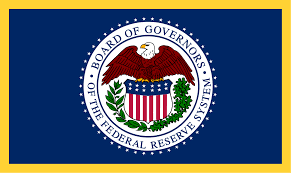The Federal Reserve on Wednesday said the economy has made progress towards the standards it set for starting to slow down its bond-buying program, but said not enough progress has been made to start tapering yet.
“Last December, the Committee indicated that it would continue to increase its holdings of Treasury securities by at least $80 billion per month and of agency mortgage‑backed securities by at least $40 billion per month until substantial further progress has been made toward its maximum employment and price stability goals. Since then, the economy has made progress toward these goals, and the Committee will continue to assess progress in coming meetings,” the Fed’s policy statement said.
In a statement following a two-day meeting, the Fed said the economy and job market have continued to strengthen. Sectors hit by the COVID-19 pandemic have improved.
The Fed said it believes higher inflation seen this year largely reflects transitory factors.
Prior to the release of the statement, economists at TD Securities said that if the Fed cited progress toward tapering, it would be a “hawkish” development
Last spring when the pandemic struck, the Fed cut its benchmark policy rate to zero. After buying trillions of dollars in assets to stabilize the financial system, since last summer the central bank has been buying $80 billion per month of Treasurys and $40 billion per month of mortgage-backed securities to keep markets stable and help spur demand.
Last December, the Fed said it would keep buying bonds until there was “substantial” progress in reaching the Fed’s goals of full employment and 2% inflation.
With the economy on the mend, the Fed has started to discuss when and how to slow down the pace of these purchases.
Economists think the Fed got briefed by the staff at the meeting this week on different scenarios for reducing the pace of purchases and whether to trim the purchases of mortgage debt at a faster pace.
There is a lot of division at the Fed about slowing down the purchases. Some regional bank presidents have been urging their colleagues to start soon to taper the bond purchases, but the majority has resisted.
Last week Powell said that reaching the benchmark of substantial progress was still “a ways off.”
Since the Fed last met in June, economic trends are pulling the bank in different directions.
Inflation has been running hotter this year than the Fed expected. The consumer price index is up 5.4% over the past year ending in June. This argues for a quicker tapering.
On the other hand, the spread of the highly transmissible delta variant of the coronavirus is adding uncertainty to the forecast, making a waiting strategy more appealing.
The Fed also announced it has set up two standing repo facilities to allow financial firms to exchange Treasury’s for cash. One facility will be for foreign and international monetary authorities and another will be for domestic firms. The new facilities are designed to support smooth market functioning during times of stress.
MarketWatch














